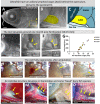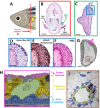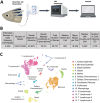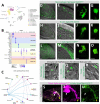This is a preprint.
The axillary lymphoid organ - an external, experimentally accessible immune organ in the zebrafish
- PMID: 39091802
- PMCID: PMC11291151
- DOI: 10.1101/2024.07.25.605139
The axillary lymphoid organ - an external, experimentally accessible immune organ in the zebrafish
Update in
-
The axillary lymphoid organ is an external, experimentally accessible immune organ in the zebrafish.J Exp Med. 2025 Jun 2;222(6):e20241435. doi: 10.1084/jem.20241435. Epub 2025 Apr 1. J Exp Med. 2025. PMID: 40167600
Abstract
Lymph nodes and other secondary lymphoid organs play critical roles in immune surveillance and immune activation in mammals, but the deep internal locations of these organs make it challenging to image and study them in living animals. Here, we describe a previously uncharacterized external immune organ in the zebrafish ideally suited for studying immune cell dynamics in vivo, the axillary lymphoid organ (ALO). This small, translucent organ has an outer cortex teeming with immune cells, an inner medulla with a mesh-like network of fibroblastic reticular cells along which immune cells migrate, and a network of lymphatic vessels draining to a large adjacent lymph sac. Noninvasive high-resolution imaging of transgenically marked immune cells can be carried out in the lobes of living animals, and the ALO is readily accessible to external treatment. This newly discovered tissue provides a superb model for dynamic live imaging of immune cells and their interaction with pathogens and surrounding tissues, including blood and lymphatic vessels.
Conflict of interest statement
Competing interests: Authors declare that they have no competing interests.
Figures








References
Publication types
Grants and funding
LinkOut - more resources
Full Text Sources
Molecular Biology Databases
